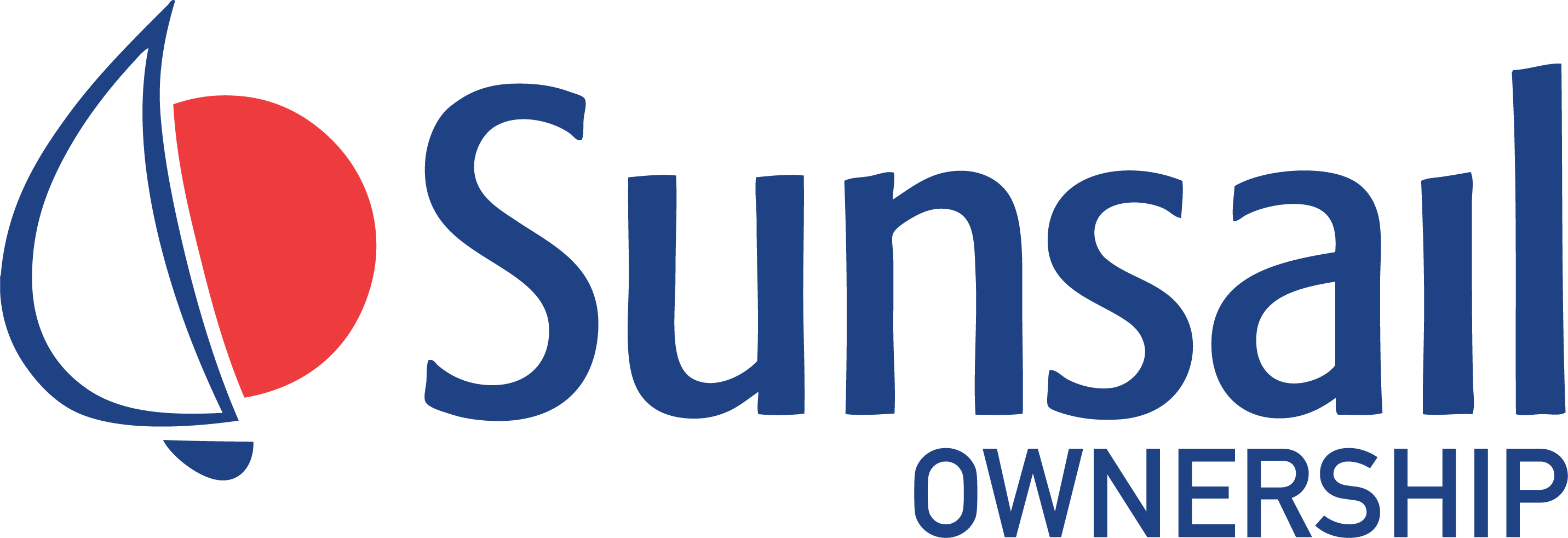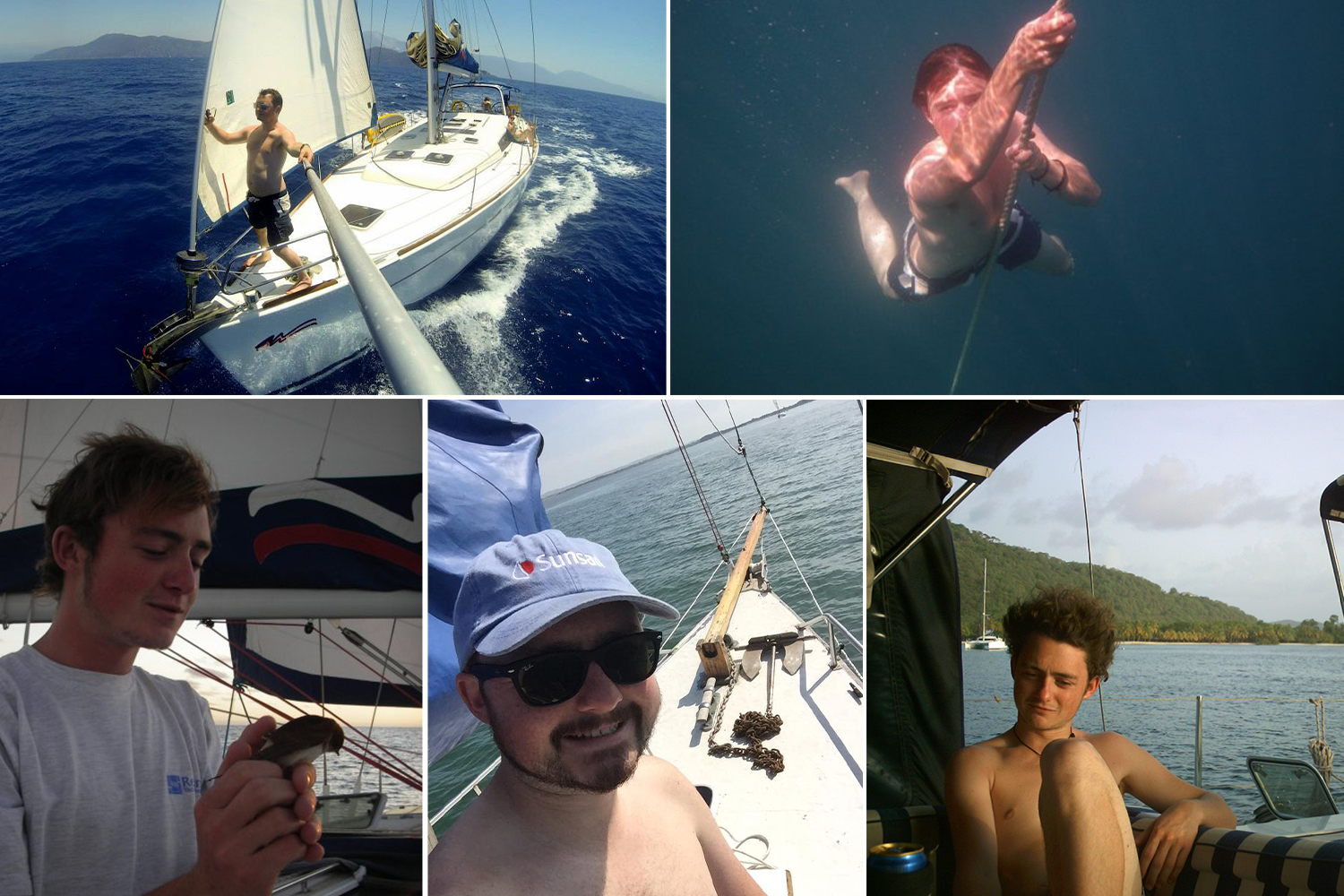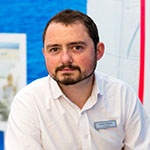Setting Sail
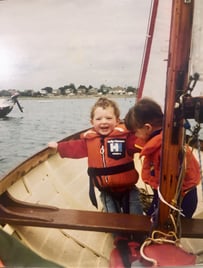 I guess that I have always loved sailing, at least I don’t remember a time when I didn’t. This is probably because I grew up with sailors. As an infant, I would be taken out in the picturesque Chichester Harbour aboard my parents 16ft Norwegian Rana. Though it was obviously much later that I took up an active interest of my own. I remember being sent off to trial my primary schools “sailing club”. This involved being pushed off from a windy Lee-on-Solent shoreline, solo aboard a Topper in a force 4 (felt more like a 9 to me). I hadn’t a clue what to do and I think the idea was that I would quickly learn through trial and error. It wasn’t a smooth start, but from those many failed attempts,
I guess that I have always loved sailing, at least I don’t remember a time when I didn’t. This is probably because I grew up with sailors. As an infant, I would be taken out in the picturesque Chichester Harbour aboard my parents 16ft Norwegian Rana. Though it was obviously much later that I took up an active interest of my own. I remember being sent off to trial my primary schools “sailing club”. This involved being pushed off from a windy Lee-on-Solent shoreline, solo aboard a Topper in a force 4 (felt more like a 9 to me). I hadn’t a clue what to do and I think the idea was that I would quickly learn through trial and error. It wasn’t a smooth start, but from those many failed attempts, 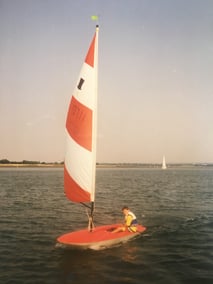 I was determined to understand how the other boys made the boat go where they wanted and how to do that the right way up!
I was determined to understand how the other boys made the boat go where they wanted and how to do that the right way up!
My father has sailed all his life and has always favoured wooden boats and classic designs. He would take us away for our summer holidays aboard his 24ft Eventide “CHEROKEE”. A tiller steerer with a short bowsprit and bilge keels. We all loved her and went on numerous adventures all around the Isle of Wight, Beaulieu River and further west to Poole Harbour and as far up the river as Wareham. I’m told I had an aptitude for helming even at that early age and in surprisingly heavy winds would brace my feet and lock arms with the tiller while my father would go forward to reef down the main sail. To see over the coach roof I would have to stand on an upturned crate.
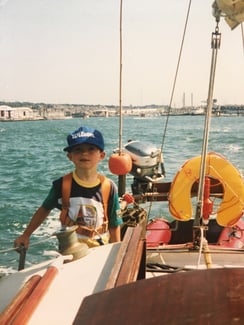 At 11 I was enrolled in my local sailing clubs summer dinghy sailing school. This was expertly run by some very hard working and experienced volunteer instructors (parents). Quickly the physics of sailing started to fall into place and simply sailing around a triangle course gave way to the greater challenges of sailing backwards, without a rudder and indeed racing.
At 11 I was enrolled in my local sailing clubs summer dinghy sailing school. This was expertly run by some very hard working and experienced volunteer instructors (parents). Quickly the physics of sailing started to fall into place and simply sailing around a triangle course gave way to the greater challenges of sailing backwards, without a rudder and indeed racing.
I never took racing as seriously as many of my close friends did. It was great to be out on the water in a good group and to make the boat go fast, but my motivation was always with simply having fun and the freedom that being on the water offers. That freedom really cannot be overstated as a young teenager. Without your own home or car, life was previously centred on socialising at people’s houses and the scrutiny of their parents. Suddenly you set off in a direction of your choosing, responsible for your own life and which way it is headed. That opportunity I later reflected was one of the greatest gifts a parent could offer a young person.
My summers were spent visiting the beach at East Head, around 6 miles away, always in a flotilla of friends, arriving on a multitude of “vessels”. These could range from dinghy and outboard, to windsurfers, sailing dinghies, kayaks and more. I guess all my happiest memories centred around being on the water, the ever-changing landscape and being directly connected to nature and the elements.
It seemed only natural as I approached 16 that I should try to qualify to teach dinghy sailing. I enrolled on a course and proudly passed at 15yr 2mths, at that time, the youngest in the country. Having to wait 10 months to be old enough to be awarded the certificate. I did very much enjoy teaching and it was very satisfying seeing people of all abilities progress, as a result of the knowledge shared. I worked for a couple of summers at Portsmouth Outdoor Centre (now the excellent Andrew Simpson Watersports Centre) which had superb facilities and the new challenge of not just teaching other young people, but now also adults and the disabled too. It was quite astonishing to me, how much more patience was required to teach adults. I guess it’s true what they say about children’s brains being a sponge, whilst we adults are rather more thick headed! I finished my dinghy instructor years with a senior instructor’s course, of which my place was kindly awarded by the Sir Peter Blake Memorial Fund who support promising sailors in pursuing their passion to the next level.
I was finishing college now and the big question of “What do you want to do with your life” was rearing its ugly head. Like many teenagers, I found this a daunting question. A suggestion was made to take a gap year and use the time to get qualified as a yacht skipper. My parents intelligently reasoned that this was both an opportunity for reflection and a great life skill I could later fall back on from almost anywhere in the world.
Journey to Yachtmaster
Age 18 I enrolled with Sail UK in Hamworthy, Poole to undertake a Fast-track RYA Yachtmaster Course. These are less than affectionately referred to in the industry as “Zero to Hero” courses, but a popular route for those wanting to eat, sleep and breathe yachting until they reach their goal. Sail UK now Poole Sailing is run by Rob Gibson a very experienced sailor and keen racer who also owns a couple of race boats alongside the Sadler 36’s we were then using for living aboard for practical training. Rob, you may also recognise as the author of many of the RYA training manuals including the widely used RYA International Certificate of Competence Handbook.
My course place was one of four students undertaking 3 months of intensive training. My course mates were Rory (24), Andy (27) and Neil (31). They came from backgrounds of stage rigging, IT consultancy and buoyage for Trinity House. Though funnily enough Neil had the least real-world sailing experience having only been to sea on fishing boats to inspect the navigational marks. Despite our varying backgrounds and age gaps, we quickly bonded and I think our mutual interest developed a team spirit. I had the most to learn because I might have already had the fundamentals of sailing worked out, but dinghy sailing did little to prepare me for the teamwork essential to successful yacht management. We sailed thousands of miles over those three months. Mostly across the South Coast from Dorset to West Sussex, but with one longer passage-making trip departing from Portugal.
The Yachtmaster Offshore certificate requires students to fulfil a minimum experience of 50 days onboard, 2500 nautical miles, 5 passages of over 60NM of which at least two must be at night and two must be as skipper.
The trip to Portugal was part of these qualifying passages and we departed from Villa Real de Santo Antonio on the Portuguese border with southern Spain. We were aboard a Beneteau 361 if I remember correctly, and the instructional skipper was an older man named Angus. The early part of the trip I remember only the avoidance of “tunny nets” and endless far-fetched stories from Angus’ days in the Navy. True or not, they certainly kept us entertained! Our aim was to reach the Balearic Islands before turning back for Portugal. Bad weather on the Atlantic shelf proved to scupper our plans though, with a fairly frightening run in tall waves towards the Gibraltar strait under just a storm sail and a second squall we decided to ride out with a night “hove to”. We reached beautiful Cartagena in Southern Spain as the furthest extent of our voyage and waited out the last of the bad weather there. I now know that the sea can provide a mixture of experiences in just a short period of time. You must take the rough with the smooth when sailing and realise that sometimes a big storm must be confronted to enjoy the sunset that’s beyond. In this case, it gave way to glassy conditions. Not a breath of wind and about 3 days under motor. This is not exactly what we would have hoped for, but as I said the lacking sailing conditions were soon tempered with alternative excitement. During my shift on night watch accompanied by Neil. We started to notice twinkling in the water created by our bow wave. This was indeed that natural phenomenon of Bioluminescence. If you are unfamiliar, light is emitted by some types of plankton when the water around them is agitated. We had the usual fun of throwing a bucket over the side and flushing the toilet to see the bowl glow and swirl. All the time the field of plankton grew thicker and the illuminations brighter, all around us and trailing away behind the boat. It was by far the most concentrated patch I have seen to this day. You may think that such an experience couldn’t get much better and I would have agreed with you until the water beside us exploded with light. Our disturbance of the plankton had attracted a nearby pod of dolphins and they came to jump, dive and play all around us. I remember vividly how clearly we could see them under the water, even their eyes could be seen, so rich was the water with plankton. They stayed with us for some time darting around like golden torpedoes before showering us in stars again and again. It’s an experience that I will always feel very fortunate to have had; only too aware that a lifetime at sea may never bring quite the same experience again. The closest I have seen to it on film was this clip narrated by David Attenborough.
As if we hadn’t already been fortunate enough; the next few light sailing days once again gave way to calm conditions. We were halfway between Villa Real and Cadiz now, back on the Atlantic shelf. Cruising at just a couple of knots under sail, we were trying to resist putting the noisy “donkey” back on. Again we were rewarded with a remarkable surprise. This time in the form of a small cloud of spray, blown up from the surface a little way ahead. A whale! This was my first encounter with a whale and I remember my heart racing in excitement. Then there was another to the side and another. Suddenly everywhere we looked the dark fins of Orca whales were breaking the surface. How they could have snuck up in such numbers made it all the more surprising. In all, there must have been around 100. Mostly adults, but with a few calves too. The most memorable was what we later identified as a large female which came up within three or four meters of our beam and swam directly under the keel. Someone shouted to “get low and hold on”, certain she would collide with the keel. Though nothing of the sort happened and we all slowly stood back up, but she was already nowhere in sight. They weren’t passing us for long and within just a few minutes they were all just specks in the distance. Out of sight, but forever imprinted as one of my best memories at sea.
The real test
The RYA Yachtmaster Offshore exam is taken without an instructor aboard and instead, they give way to an RYA examiner who will put the students through their paces. We were well advised that while bribery won’t ensure a pass, some homemade sandwiches and regular cups of tea will go a long way to demonstrating care for one’s crew. During the two day test, each student takes turns as acting skipper, while the others perform only basic tasks befitting of RYA Competent Crew. I would summarise the experience much like the driving test. Quite nerve racking because there seem to be 101 things the examiner will be considering and simply being able to sail isn’t itself the criteria. Only in many ways, it is much harder than a driving test because each student is tested for 8-12 hours, so you can never drop your guard. One particularly memorable moment was whilst performing my “Blind Nav”. An exercise requiring the acting skipper to assume fog-like conditions by navigating from below with only paper charts and depth & speed instruments to go by. This I was asked to undertake under sail and from Osbourne Bay (NE Cowes), in front of Queen Victoria’s Osborne House and up to Warsash on the Hamble River. This could have been deemed a fairly cruel challenge at the best of times, since it requires crossing a shipping lane at least once and in a movement prohibited zone, requiring at least 1000m in front of any shipping, then skirting around the Bramble shingle bank and finally up a narrow channel into the busy Hamble River. It was actually all going quite well and as I approached Southampton water due south of Calshot, I was actually starting to relax. Then I got a call from my crewmates on deck to say that while I was making a good job of it so far, a new challenge in the form of the QE2 was appearing from Southampton Water and a more elaborate avoidance strategy would be required. With the 1000m rule in mind, one would have to be generated very quickly indeed. Anyway, I somehow got through it, maybe by the skin of my teeth, but we remained safely out of harm’s way and the examiner seemed satisfied enough. Maybe the frequent cups of tea had done something to help with that!
Still a lot to learn
It was upon qualifying for the RYA Yachtmaster Offshore and necessary commercial endorsements that I started my journey with Sunsail. Initially, I approached the UK charter base knowing they had a large fleet and employed many freelance skippers, hoping I could find regular and varied skippering experience.
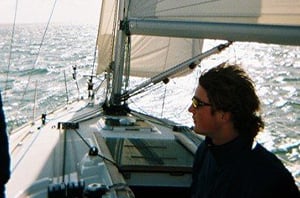
Varied it was, my first trip was a baptism of fire. I was booked aboard to skipper one of two yachts carrying a stag do over to the Isle of Wight for the weekend. These guys 10 years my senior, mostly rugby players and largely working for breweries, were certainly starting me in the deep end. I may have been able to deliver an expert safety briefing and instruction on safe handling of ropes, but I couldn’t stop them picking me up under their arm and dragging me ashore with them! Subsequent trips involved regular racing in Sunsail’s fantastic one-design fleet and experience days from the general public up to corporate groups of CEO’s. It was a great opportunity to learn to take authority of the yacht and the reward of seeing a positive response from even business leaders, listening to someone so far their junior, was hugely satisfying. Crew management was the most valuable lesson I think that I ever learned. As a young teenager, I would run all over a two-man dinghy whilst sailing singlehanded, launching and recovering the spinnaker and swinging out on the crew’s trapeze. This whilst challenging wasn’t representative of a good skipper. I see now that a really great skipper actually does virtually nothing, but coordinate the crew effectively to manage all of the systems on board. Anticipating what is up ahead and briefing the crew in plenty of time. The tip I offer to new yacht sailors starting to sail with family & friends is to put all their focus into communication. It is essential that everybody aboard knows how to undertake their role and when, so that the skipper can maintain control and all aboard can feel relaxed. We have all revelled in the sight of an otherwise happy family screaming at each other during their approach to the dock; wondering whether successful berthing or divorce will occur first. Meanwhile, their neighbours on the dock look on in glee; only adding to the tensions aboard the floundering vessel. This is nearly always due to a lack of effective communication. Sailing with family and friends is a big change in the normal dynamic and it can feel uncomfortable, but the skipper must lead effectively and the crew must follow or it simply won’t work for anybody aboard.
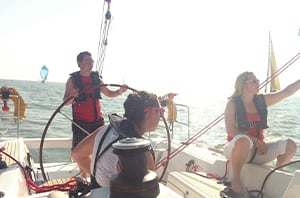
Expanding horizons
Like my colleague Nancy, I was fortunate enough to work for a time as bowman on the Sunsail Americas Cup Solent Experience yachts. These were France 2 & France 3 from the 1996 San Diego Americas Cup. Incredible machines even by today’s standards. I sailed primarily aboard France 2 the development yacht with a classic bow shape to France 3’s then cutting-edge vertical bow design.
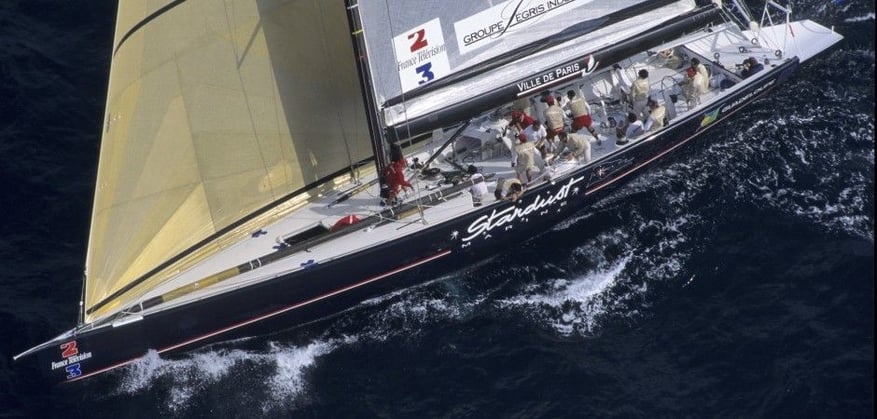
Both yachts were 78ft of carbon fibre hull and sported a 110ft mast. Well, on the dock they were. Once out on the water with the back stays cranked on hard they reduced in length by over a foot, the yacht curling like a bow under the tension. As bowman, my main role was preparation, launching and recovery of the vast 520 sqm spinnaker. We would match race the two yachts and often a race was won or lost by which bowman had their “kite” ready on time. The target was 8 minutes to have this mass of material untwisted and repacked in the bag down below in a compartment measuring just 6ft x 6ft. To make kite work all the more challenging, the decks had no guard rails and the tack of the kite would usually need spiking (releasing) either from the tip of the bow or the end of the 30ft carbon spinnaker pole, normally hanging at least 20ft over the water. I will never forget the sound and reverberation of the pole on plunging the spike into the release catch and seeing the vast sail peel away to leeward. Everything on board was like this though, with sails hoisted and trimmed from a bank of coffee grinders. Huge custom winches, tailed by hand using fire-resistant ropes which would smoke when eased on the winch drums. The result was tremendous, they would accelerate almost instantly, taking the crew off their footing and were capable of turning around almost within their own length. True racing thoroughbreds and an unforgettable experience for all that sailed upon them. Conversely, I recall they could be almost the biggest challenge in light airs. At the start of Round the Island Race we contested Class 0, the elite designs which are started first. The wind was so light and mainsail battens so stiff, that between slow tacks to get line position, I would have to swing from a spare halyard around 90ft up, kicking with both feet against the sail to get it to pop into shape. Quite an experience and surely the best view of the start, in a world before drones.
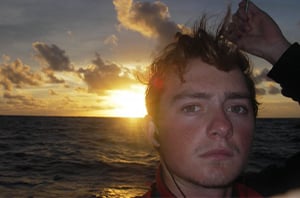
Most additional skippering remained in the UK, though I did join a fellow UK skipper in a yacht delivery of a Beneteau Oceanis 49.4 from Nice to St Lucia. That trip was around 27 days sea time broken up with stops in Gibraltar (top tip – M&S tinned ready meals!) and Gran Canaria for supplies. This was another great experience, though one I will probably remember best for the time for reflection, the infinite horizons and ever revolving sky full of stars. Something I’d never appreciated was so active before then.
Back on dry land
The trans-Atlantic trip spelled the end of a life of seasonal work for me. Sailing hadn’t lost its thrill by any means, but the seasonal nature of being a yacht skipper was too disruptive and I longed for a normal life with some more structure.
This led me to join the Sunsail Holiday Sales team, then at Port Solent. I had little prior office experience, but found that the customers I would converse with had the same passion for the sea that I had and I really enjoyed hearing them rave about the incredible experiences Sunsail had provided.
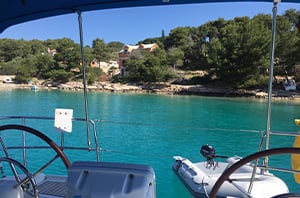
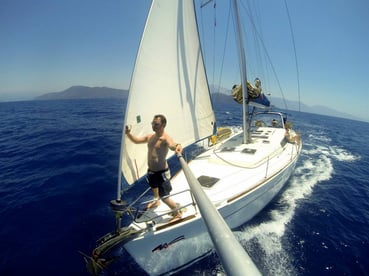
New to the overseas Sunsail product, there was a lot to learn, but first class training was offered by a colleague who had worked previously as a Flotilla Hostess for many years around the Mediterranean. Sunsail also sent me on educational trips, which - you guessed it - looked a lot like a holiday. I mean, how better to share the merits of a cruising area than to speak about the many pleasures experienced first-hand? As Sunsail staff we have always been encouraged to make use of the holidays and booking last minute, staff members can get out to experience our bases globally. This has been a tremendous opportunity for someone like myself.
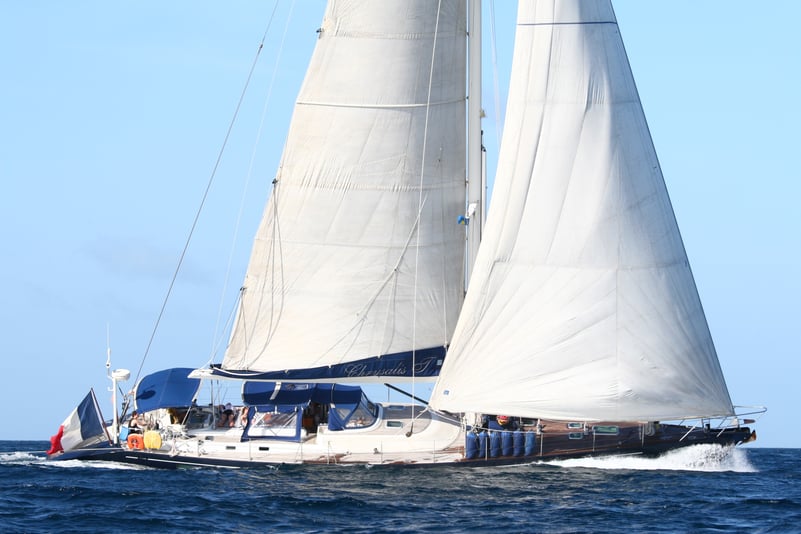
I’m now married and my wife and I have had the great pleasure of sailing together throughout Croatia, Greece and Turkey, not to mention further afield from the BVI’s, Antigua and down in St Lucia, St Vincent and the Grenadines in the Caribbean.
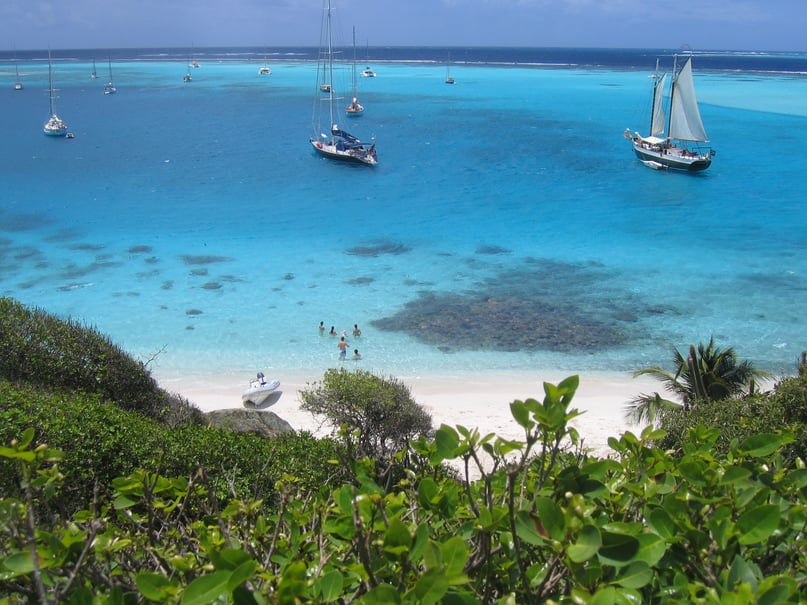
We even took a Sunsail yacht from Athens as part of our honeymoon, exploring the Saronic Gulf and the incredible history of the area.
I moved over to the Yacht Ownership team in 2010 after a year managing Sunsail Worldwide Sailing Schools. Yacht Sales remains a really interesting position for me. I am fortunate enough to meet many of Sunsail’s most loyal customers and to now call many of them friends too. Our yacht owners get great benefit from the Yacht Ownership programme and the substantial saving and hassle-free nature means that most will go around for at least a second contract (some as many as their fifth!). That means I get the great pleasure of staying in touch with Owners long-term and sharing in what really must be considered the Sunsail family. I am always happy to share recommendations on the best places to visit and relish the opportunity to meet owners at boat shows and owners parties to hear their tales from far and wide.
Perhaps I have become a bit of a fair weather sailor after all these trips abroad, but it’s a sailing life just like that of a Sunsail Owner and one I will struggle to give up. 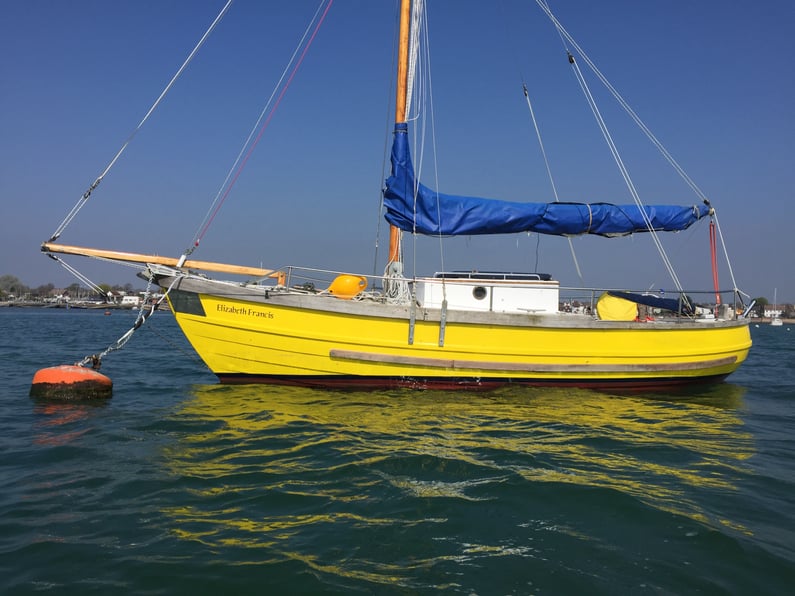
Today I sail after work and at weekends aboard my 27ft gaff cutter in Chichester Harbour, back where it all started. In the summer 2018, we had a daughter and are determined for her to love the sea just as much as we do; she has already been for a short trip aboard at just 18 days old. There is so much world to explore and I firmly believe the best way to see it is by boat.
I wonder what our next adventure will be..?
Have you started to plan yours..?
